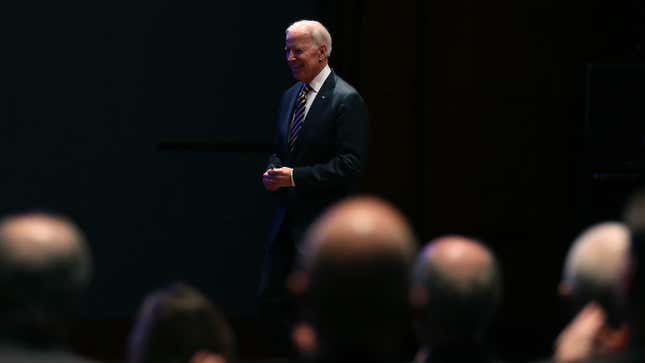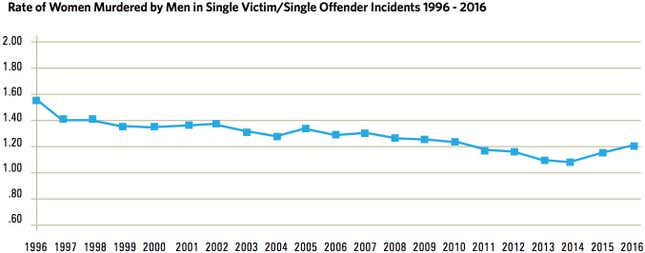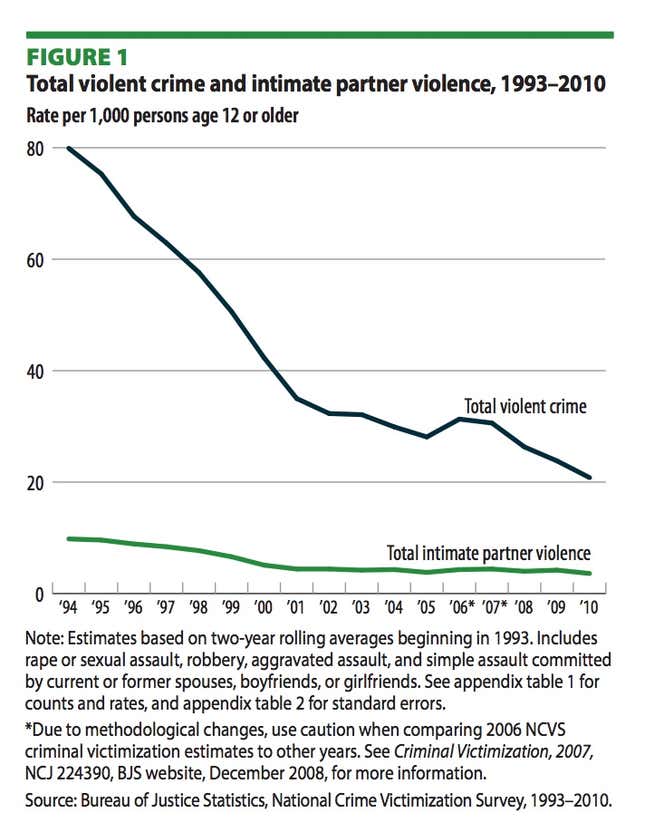

The video, like so many videos ostensibly talking about how to save the world, begins with two white men in crisp white shirts and ties. One of the men is a reporter, the other is then-vice president Joe Biden. They sit facing each other on an Amtrak train, outlines of Anywhere, America, zipping past in the window.
“Another thing, about how perspectives change over time,” the reporter says, easing Biden into what he knows will be a difficult question: “Bobby Rush, member of Congress, said the other day ‘I’m ashamed that I voted for the ’94 crime bill.’ Are you ashamed of that bill?”
“Not at all,” Biden replies. “In fact, I drafted the bill, if you remember.”
And one reason these draconian provisions passed with such overwhelming support was because Biden engineered it so a vote against the crime bill was a vote against women. Tucked inside that 1994 crime bill was the Violence Against Women Act, a measure that meant $1.6 billion for rape crisis centers, the National Domestic Violence Hotline, battered women’s shelters, training law enforcement, and grants for police departments that created “pro-arrest programs.”
When VAWA is discussed in the press, it’s often discussed separately from its crime bill origins—cast as a victory for women and proof of Biden’s longstanding commitment to women’s rights. But this sectioning off of VAWA matters. It obscures the law from its origin as well as some of its consequences, and allows Biden and his supporters to present a selective, rosy narrative of a good man trying to do right by women. But there’s an alternative narrative of VAWA that is also part of Biden’s legacy: It bound vital supports for domestic violence victims to an endless expansion of the carceral state.
Professor Angela Y. Davis, speaking at the Color of Violence: Violence Against Women of Color conference in 2000, articulated the contradictions of VAWA, and raised the question of whether a state that “constructs itself in and through violence” can act to “minimize violence in the lives of women.” Her analysis is no less relevant today:
The major strategy relied on by the women’s anti-violence movement of criminalizing violence against women will not put an end to violence against women–just as imprisonment has not put an end to “crime” in general.
I should say that this is one of the most vexing issues confronting feminists today. On the one hand, it is necessary to create legal remedies for women who are survivors of violence. But on the other hand, when the remedies rely on punishment within institutions that further promote violence—against women and men, how do we work with this contradiction?
There is no question that VAWA has had a transformative impact on women’s lives—both in the creation of material resources for victims and the shift in our perceptions about violence it helped bring about. But it’s worth reviewing the ugly parts of this legislation—work that was sold as a way to make women safer, in fact, the only way to make women safer—as Biden launches his bid to be the most powerful man in the country. Biden has his personal narrative of what VAWA did, which will be spread across his campaign. But the voices of the women VAWA failed are just as important to hear.
At the time VAWA was passed in 1994, appearing “tough on crime” was a reliable way for a politician to make a name for themselves. (While he was governor of Arkansas and campaigning for president in 1992, Bill Clinton infamously went back to his home state so as to not miss an execution. And it was the now-solid blue state California that passed one of the earliest three-strikes laws in the country, which other states quickly copied.) Amid the growing belief that criminalization fixed problems, the federal government, with Clinton now in the executive chair, got in on the action with the 1994 crime bill. Tucked within it was VAWA, which Biden had been proposing since 1990.
-

-

-

-

-

-

-

-

-

-

-

-

-

-

-

-

-

-

-

-

-

-

-

-

-

-

-

-

-

-

-

-

-

-

-

-

-

-

-

-










































